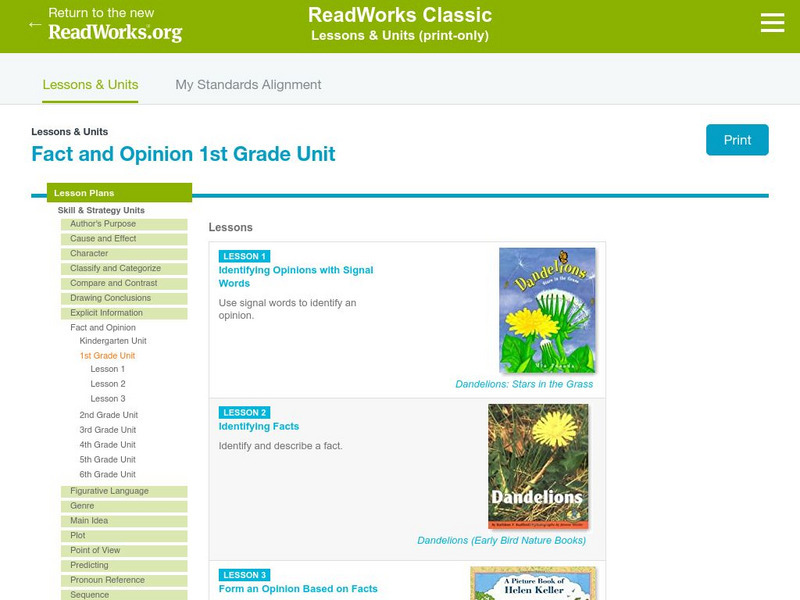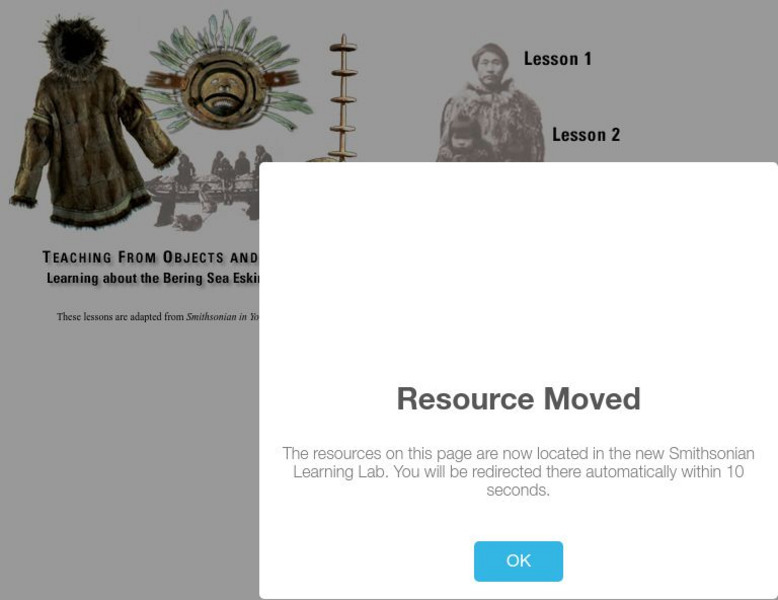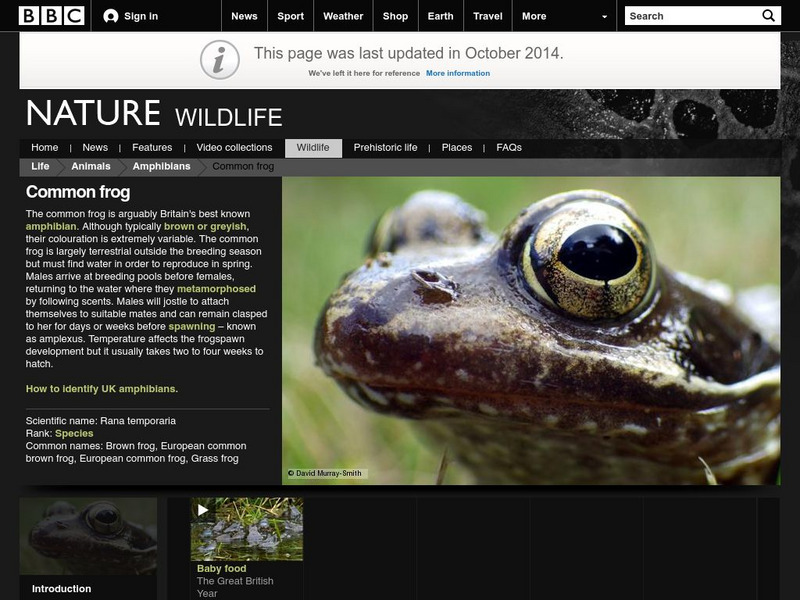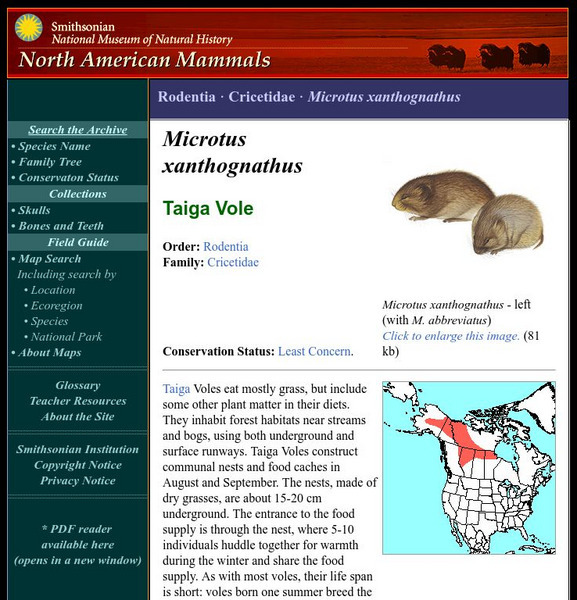Read Works
Read Works: Fact and Opinion 1st Grade Unit
[Free Registration/Login Required] A three-lesson unit on fact and opinion through which students learn how to identify opinions through signal words, identify facts in a non-fiction text, and use facts to help them formulate opinions of...
Smithsonian Institution
Smithsonian Education: Teaching From Objects and Stories: Eskimo People
The object of these three lesson plans is for the students to use objects and stories to learn about the Eskimo people of the Bering Strait. All worksheets and materials are included. Students will solve historical problems, using...
BBC
Bbc: Nature: Wildlife: Common Frog
Use this site to learn all about the life of a frog. Read this detailed fact sheet and examine these photos for further information.
Remedy Health Media
Health Scout: Drug Abuse
This article on drug abuse discusses and presents facts on the many different types of drugs available. The effects of these drugs are also mentioned. Also in the article is a section on the several stages of drug use and their...
Akron Children's Hospital
Akron Children's Hospital: Kidshealth: For Teens: Marijuana
Marijuana is the most widely used illegal drug in the United States. Get the facts about it in this article for teens.
Science and Mathematics Initiative for Learning Enhancement (SMILE)
Smile: Teeth Identification in Omnivores, Herbivores and Carniv
In this lesson plan, students make puppets out of paper bags and use corn to give their animal (dinosaur, raccoon, etc.) the correct type of teeth based on the animal's diet.
Partnership for Drug-Free Kids
National Youth Anti Drug Media Campaign: Above the Influence: Marijuana Facts
This resource presents informaion about the risks of using marijuana.
Alabama Learning Exchange
Alex: Field Challenge Strategy Game
Lesson plan describing a strategy game where young scholars use flags in a large field to mimic the growth and spread of trees, grass, and shrubs. Rules for game include how trees, grass, and shrubs interact to compete for sunlight,...
Other
Bringing History Home: Environmental History
This 2nd grade unit introduces children to the history of environmental protection in the U.S. Beginning with three types of environment - mountain, grass plain and forest - the lessons explore some of the natural resources found in...
TeachEngineering
Teach Engineering: Permeable Pavement
In this activity, students investigate how different riparian ground covers, such as grass and pavement, affect river flooding. They learn about permeable and impermeable materials through the measurement how much water is absorbed by...
Science Education Resource Center at Carleton College
Serc: Investigating Soil Which Soil Help Plants Grow?
In this guided inquiry lab, students will investigate what type of soil let plants/grasses grow the best. Students will answer the question by conducting an experiment using five different soils found in our area, school soil, potting...
Science Buddies
Science Buddies: Composting and Vermiculture
Make your own fertile soil using kitchen scraps, manure, leaves, grass clippings, and other compostable materials. Which materials make the best compost?
Other
Digital Revolution: Homestead National Monument of America
This information about the Homestead Act and homesteaders has been garnered from the National Park Service. Use the links at the bottom to find out about the history of the Act, the lives of the homesteaders, and what a tall grass...
Other
British Battles: The Battle of Yorktown 1781
The British called the Americans rebels! But in the end, had to surrender to them. Read the exciting account, complete with artwork and facts, of this famous battle that led to the independence of the American states.
Smithsonian Institution
National Museum of Natural History: American Mammals: White Sided Jackrabbit
The White-sided Jackrabbit strongly prefers level ground to hills, and does not require shrubs for cover, but uses clumps or dense stands of grass instead. Grass also makes up more than 99 percent of its diet. Learn more about the Lepus...
Smithsonian Institution
National Museum of Natural History: American Mammals: Taiga Vole
Taiga Voles eat mostly grass, but include some other plant matter in their diets. They inhabit forest habitats near streams and bogs, using both underground and surface runways. Learn more about the Microtus xanthognathus, more commonly...
Curated OER
Educational Technology Clearinghouse: Maps Etc: Animals of Asia, 1906
A pictorial map from 1906 illustrating the various animals that live in regions of Asia. "The white bear, the seal and many sea birds are found near the Arctic shore. In the cold parts of Siberia tribes of yellow people keep herds of...










